Why I Choose Whole Foods for Better Health 🍎
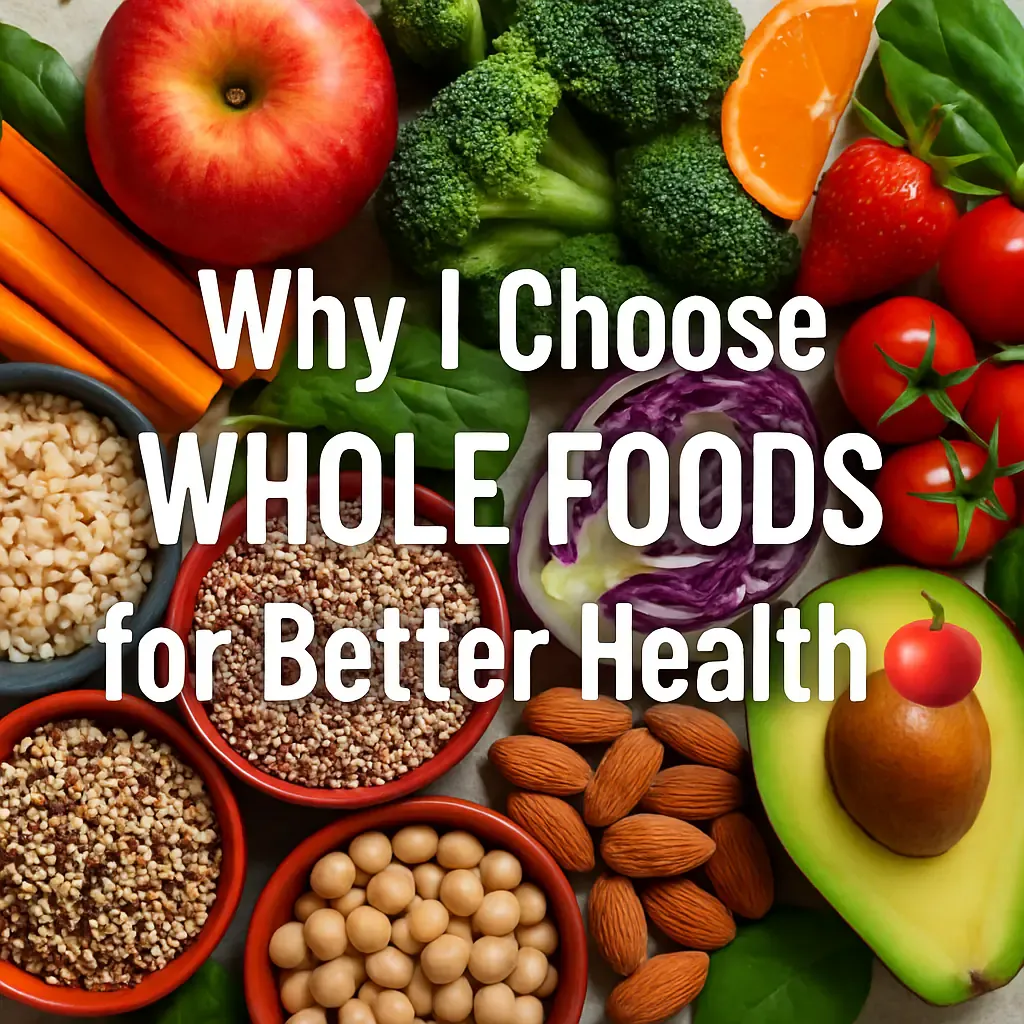
TL;DR - Whole Foods for Better Health
• Who it's for: Health-conscious individuals wanting to transition from processed foods to natural, nutrient-dense options
• Main outcomes: Better appetite control, improved energy stability, reduced inflammation, lower disease risk, natural weight management
• Key steps: Identify processed foods → Replace with whole alternatives → Use meal planning guides → Track nutrition changes → Build sustainable habits
• Timeframe: Notice energy improvements in 1-2 weeks, appetite changes in 3-4 weeks, long-term health benefits in 3-6 months
• How NutriScan helps: Compare processed vs. whole food nutrition, track ingredient lists, monitor nutrient density improvements
Have you noticed how your body feels calmer after a bowl of plain oats but heavy after a boxed snack? I asked myself that many times. So I read, cooked, logged meals with NutriScan, and checked what science says about eating food in its natural form. Here's what I found.
❓ Have you noticed how your body feels calmer after a bowl of plain oats but heavy after a boxed snack?
I asked myself that many times. So I read, cooked, logged meals with NutriScan, and checked what science says about eating food in its natural form. Here's what I found.
📊 What the studies say (quick facts)
| Study | Key take-away |
|---|---|
| 2024 BMJ umbrella review | High ultra-processed food intake linked with higher risk of 32 health issues, including obesity, heart disease, type-2 diabetes |
| 2023 Frontiers analysis | Swapping packaged items for unprocessed meals lowered body weight and cholesterol in adults |
| NIH controlled trial (2019) | Participants ate ≈ 500 extra kcal/day and gained about 1 kg when given ultra-processed menus compared with whole-food menus |
| Review of 48 meta-analyses | Plant-heavy, whole-food diets tied to lower cancer and heart-disease risk |
| Ongoing trials (2024) | European labs are testing why unprocessed meals control appetite better |
🍽️ Everyday examples I swear by
- Breakfast swap - sugary cereal ➜ rolled oats with banana and crushed nuts
- Lunch boost - instant noodles ➜ brown-rice bowl with lentils, spinach, and a boiled egg
- Snack rescue - potato chips ➜ air-popped popcorn with a pinch of sea salt
- Sweet tooth - packaged cookie ➜ dates filled with peanut butter
- Hydration - soda ➜ water with lemon slices and mint
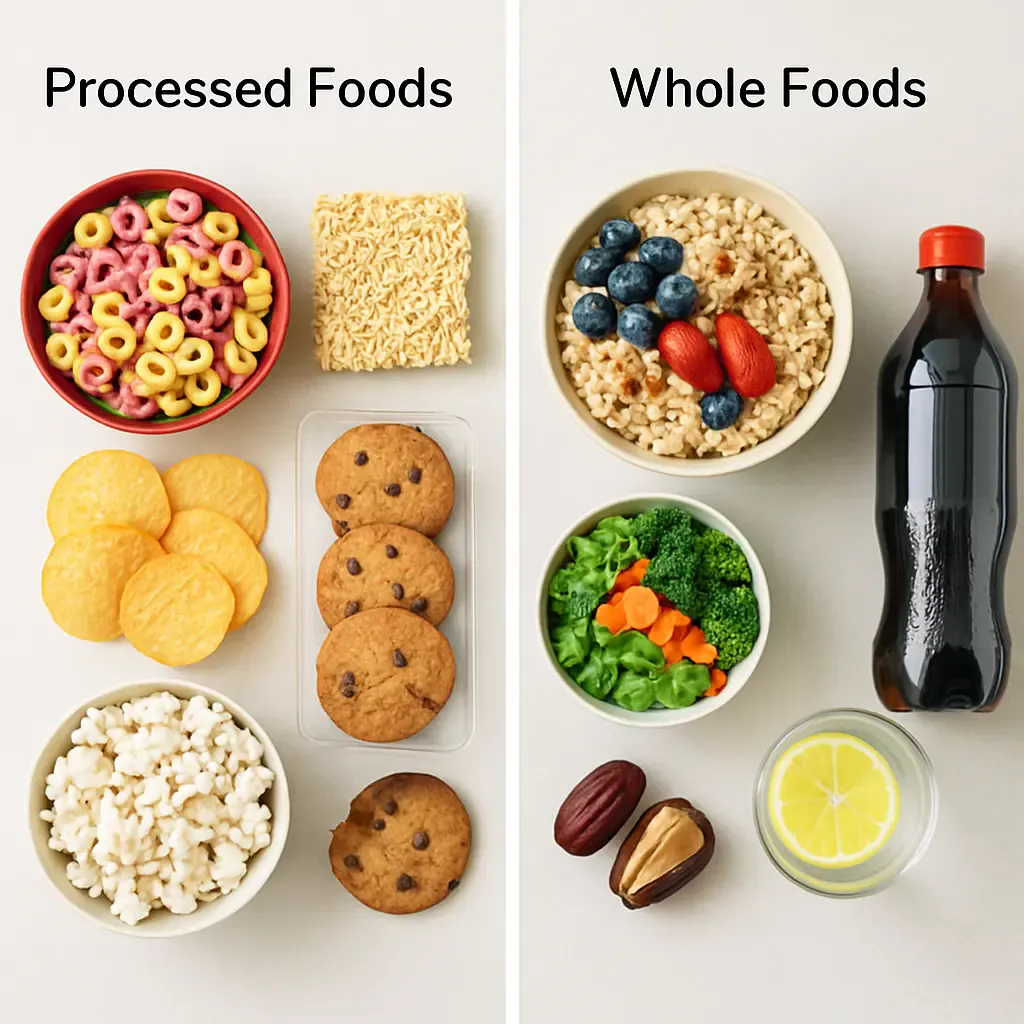
💡 Simple tips & tricks
- Shop the outer aisles of the store first (produce, dairy, eggs, fish)
- Read labels: if a food has more than five items you can't pronounce, leave it
- Batch-prep beans, quinoa, and chopped veg on Sundays
- Carry a fruit in your bag to avoid impulse buys
- Use NutriScan to snap every meal and track patterns-seeing is believing

Track your whole food intake easily with NutriScan's meal logging feature (Home > Plus Icon > Log Food)
🛠️ Step-by-step guide to start today
- Audit your pantry - Move boxed, sugary, or ready-to-eat foods to a separate shelf
- List five real foods you already like (e.g., apples, eggs, brown rice, carrots, yogurt)
- Plan one whole-food meal per day for the first week
- Upgrade one processed item each week (white bread ➜ whole-grain loaf)
- Check progress with NutriScan - the app highlights nutrients and shows trends
- Repeat and stack wins - after four weeks most of your plate will be natural
🌍 Whole foods around the world
| Region | Quick plate I love | Why it works |
|---|---|---|
| Japan | Steamed rice, miso soup, grilled salmon, seaweed salad 🥢 | Simple cooking keeps omega-3 fats, iodine, and gut-friendly microbes |
| Mexico | Corn tortillas, black beans, pico de gallo, avocado 🥑 | Fiber from beans plus healthy fat from avocado keeps me full for hours |
| India | Brown rice, yellow dal, sautéed spinach, curd 🥗 | Lentils pack plant protein; spices add antioxidants without extra salt |
| Mediterranean | Chickpea salad with tomato, cucumber, olive oil 🫒 | Whole legumes plus raw veg = steady blood sugar |
| Middle East | Hummus, whole-wheat pita, tabbouleh 🌿 | Bulgur and herbs deliver slow carbs and minerals |
Trying dishes from different cultures keeps real food exciting and stops boredom.
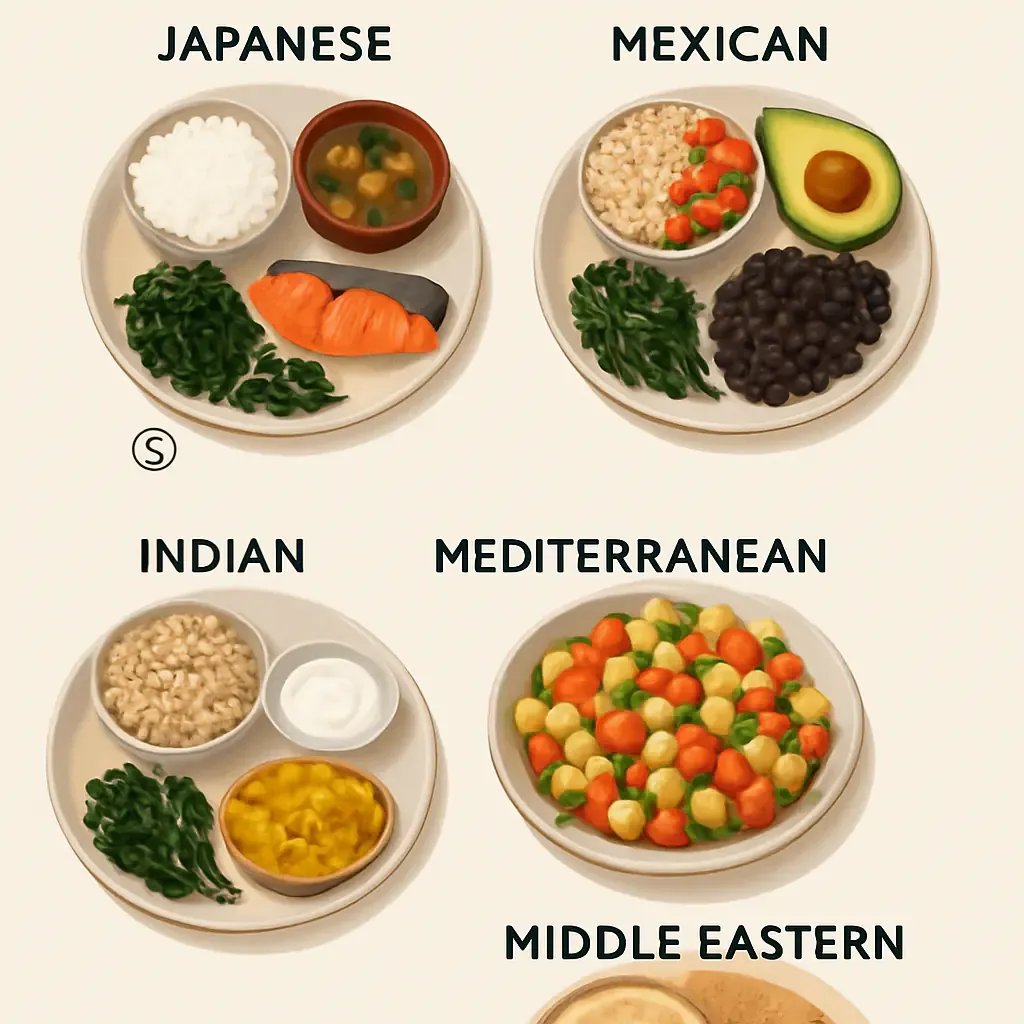
📋 Smart grocery list for a beginner
- Grains: rolled oats, brown rice, quinoa
- Proteins: eggs, lentils, chickpeas, plain yogurt, canned tuna
- Veg & fruit: spinach, bell peppers, carrots, apples, bananas
- Good fats: raw nuts, seeds, olive oil
- Flavor adds: garlic, ginger, herbs, lemon
I stick this list on my fridge. If it's missing, I restock first.
🕒 My daily loop with NutriScan
- 07:30 - Snap my oatmeal bowl; app shows 9 g fiber, nice start
- 13:00 - Upload photo of rice-dal lunch; NutriScan warns me: protein a little low. I toss in two boiled eggs 🥚
- 16:00 - Reach for packaged wafer, scan it, notice palm oil & added sugar. I swap for fruit + nuts
- 20:00 - Dinner pic of veggie stir-fry; app highlights vitamin C rise
- Weekly review (Sunday) - Dashboard shows less processed fat and more fiber this week. Score!
This quick check-in keeps me honest without food-scale drama.
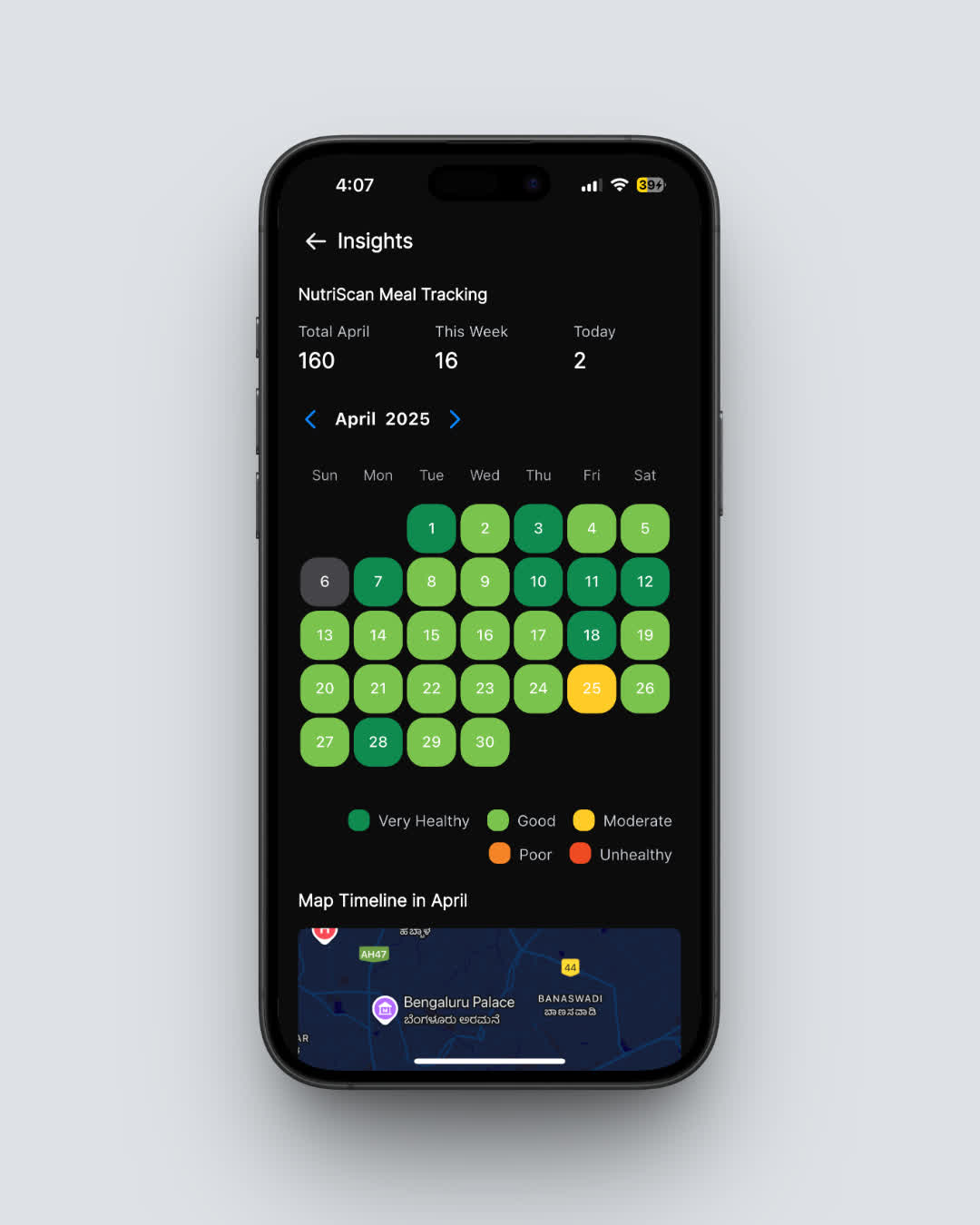
NutriScan provides detailed insights on your nutrition from whole foods (Home > Insights tab)
🔄 One-week starter plan (template)
| Day | Breakfast | Lunch | Snack | Dinner |
|---|---|---|---|---|
| Mon | Oats + berries | Chickpea salad | Apple + nuts | Grilled fish + quinoa + greens |
| Tue | Greek yogurt + banana | Brown rice + dal | Carrot sticks + hummus | Veggie omelet + toast |
| Wed | Smoothie (spinach, mango, flax) | Whole-wheat wrap + beans | Popcorn | Stir-fried tofu + veg |
| Thu | Boiled eggs + fruit | Lentil soup + salad | Orange | Baked sweet potato + black beans |
| Fri | Rice cakes + peanut butter | Quinoa bowl + veggies | Dates | Chicken curry (light oil) + millet |
| Sat | Miso soup + rice | Falafel + tabbouleh | Yogurt | Salmon + roasted veg |
| Sun | Overnight oats | Left-over curry bowl | Trail mix | Sushi (brown-rice) roll |
Mix and match; aim for color and real ingredients.
📝 Conclusion
Since I shifted most of my meals to foods that look like they grew or grazed, my energy is steady, my yearly blood work looks better, and I spend less time worrying about macros. Whole foods are not a trend; they are the default setting for our bodies. Start with one meal, snap it in NutriScan, and see how good "real" can feel.
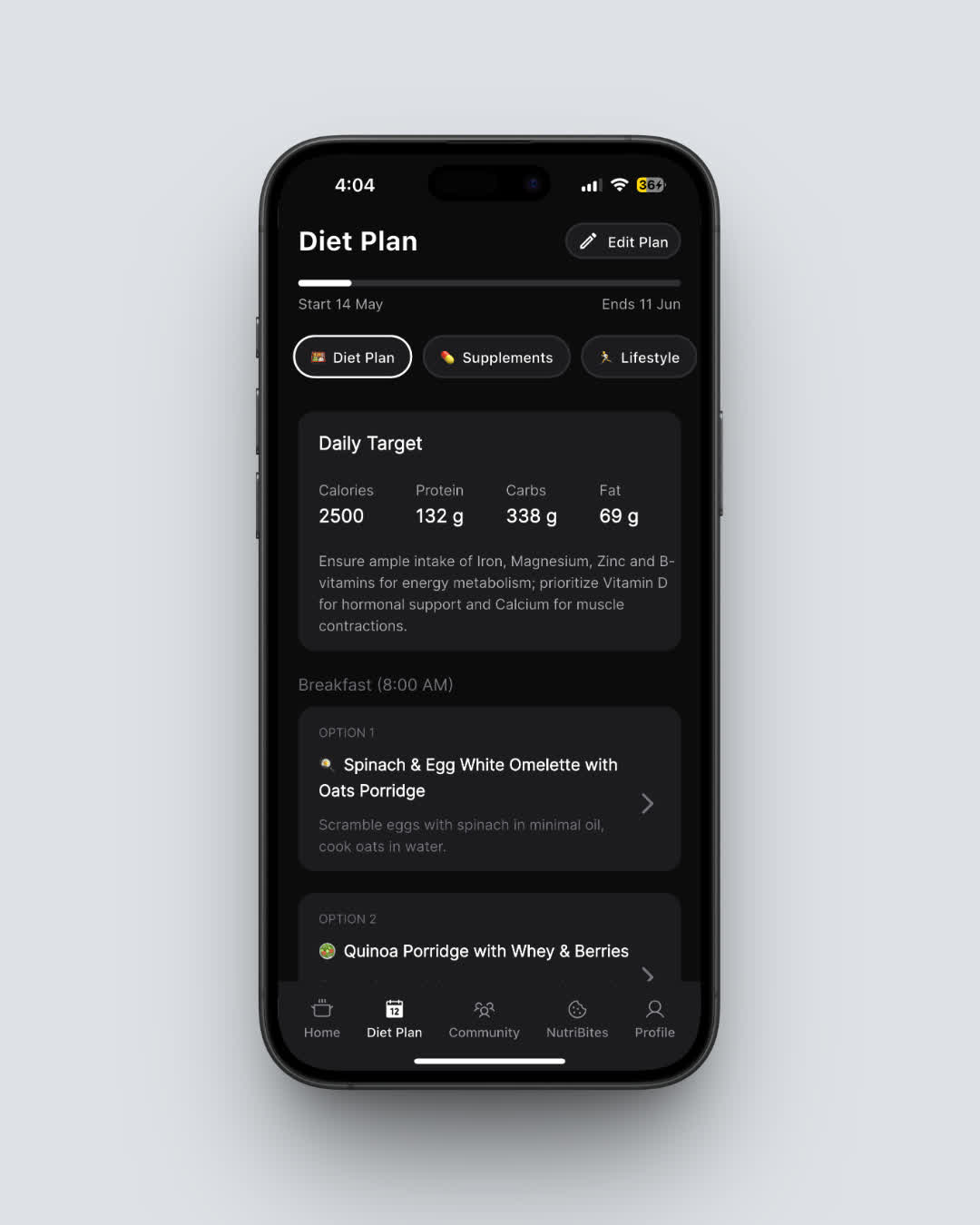
Create your own whole foods meal plan with NutriScan (Profile > Diet Plans > Create New Plan)
🤖 FAQs
Q1: Why are whole foods better than "diet" packaged items?
A1: "Light" or "diet" foods often swap calories for additives or sweeteners that may not support gut health. Whole foods keep fiber, water, and micronutrients intact.
Q2: Do I need to go 100% unprocessed?
A2: No. Even replacing one highly processed snack daily with fruit or nuts can cut hundreds of empty calories over a week.
Q3: Can whole foods fit a busy schedule?
A3: Yes-choose quick options like boiled eggs, ready-washed salad mixes, canned beans, and frozen veggies. They're minimally processed and save time.
Q4: Is eating this way expensive?
A4: Buying seasonal produce, grains in bulk, and cooking at home usually costs less than frequent take-out or specialty snacks.
Q5: How does NutriScan help?
A5: I snap a photo, the app shows calories and nutrients, flags patterns (like too little fiber), and suggests swaps-no manual logging required.
Q6: Do frozen veggies count as whole?
A6: Yes. Freezing keeps nutrients; just skip sauces or added salt.
Q7: How can I satisfy a sweet craving?
A7: Dates, whole fruit, or dark chocolate (70%+) in small squares work for me.
Q8: What about bread?
A8: Look for 100% whole-grain with short ingredient lists; avoid added sugar and refined flour blends.
Q9: Is coffee okay?
A9: Black coffee or with a splash of milk is fine; watch sugary syrups and whipped toppings.
Q10: Can I eat out and still follow this?
A10: Pick dishes that look like real food-grilled meats, steamed veg, rice, salads. Ask for sauces on the side.

